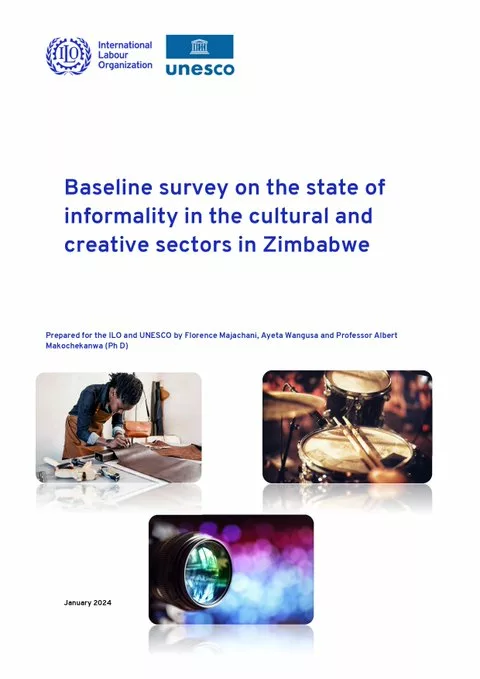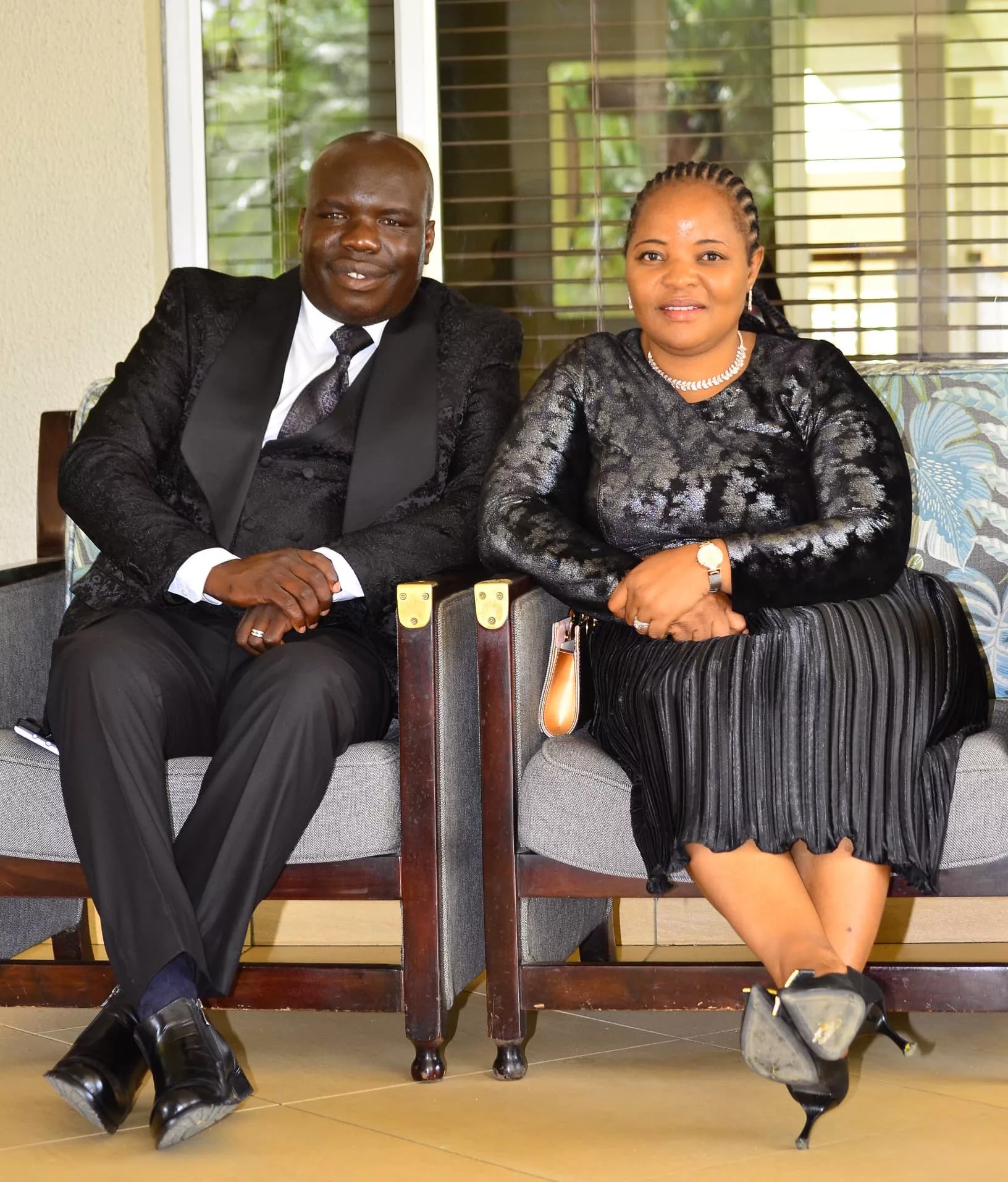|
Getting your Trinity Audio player ready...
|
According to the Report on the state of informality in the cultural and creative sectors in Zimbabwe, produced by the International Labour Organization (ILO) and the United Nations Educational, Scientific and Cultural Organization (UNESCO), the significance of the informal economy in Zimbabwe cannot be underestimated. It employs more than 80 percent of the population.
The ILO-UNESCO report notes that it is extremely complex to estimate the exact size of the informal sector in the creative economy of Zimbabwe owing to a persistent lack of proper records and documentation, opacity, and a considerable percentage of informal groups and artists. It also establishes that the creative economy is dominated by own-account workers or freelancers (93 percent) with only 7 percent being salaried/paid workers employed by registered enterprises.
The informal sector within the creative economy of Zimbabwe, like other African countries, is driven by rigid formalization processes, a lack of government incentives for formalization, and a lack of knowledge about formalization among business operators.
The cultural and creative sectors need to improve the working conditions of artists and cultural professionals to reap the benefits of the creative economy.
The cultural and creative sectors are a notable contributor to the country’s economy. Crafts are regarded as one of the most important foreign currency earners within the creative economy. Between January and April 2023, the value of craft exports increased by 24 percent, from US$2.6 million to US$3.3 million indicating high demand for Zimbabwe-made arts and crafts in the home interior industry, as well as art galleries.
Similarly, Zimbabwe’s exports of clothing and textiles in 2019 totaled US$62.3 million, concentrated within regional markets such as Botswana, Malawi, Mozambique, South Africa and Zambia. This foreshadows the possibility of this industry becoming a top foreign currency earner for the country if expanded to more countries in the SADC region.
However, despite these promising earnings, the working conditions for professionals in the creative sectors operating in the informal economy are far from conducive. For example, professionals such as tailors in the fashion industry claim that they work far beyond the statutory working day of eight hours to meet their customers’ demands and make more money. Furthermore, night work is sometimes dictated by the availability of power for machinery.
Incomes in the informal sector of the creative economy are considerably low. Most sectors within Zimbabwe’s creative economy have no regulatory or legal frameworks, strategies, or initiatives to define a minimum wage or minimum remuneration rate for workers. Key informants indicated that cultural and creative sectors operating in the informal sector of the creative economy are characterized by a survivalist approach, although they remain the most immediately accessible source of livelihood for a wide spectrum of people, including youth and women.
Creative economy workers in Zimbabwe earn less than their counterparts abroad. This is especially the case for the audiovisual sector. According to the report, “Local broadcasters offer US$ 2,000 per 20-minute episode including costs such as production, travel, equipment hires, catering, wages, and transport, while the same episode is paid at US$ 2,000 per minute by international broadcasters, i.e. US$ 40,000 for a 20-minute episode.”
Most freelancers work without contracts. The report revealed that this is the accepted norm and described workers’ perception that formalization, including the issuance of contracts, applies to workers in particular enterprises and not others. Most freelancers engaged for payment of less than US$ 100 do not insist on a contract, as they too wish to avoid the administrative burden. As a result, the work is done but sometimes the artists go unpaid for the work and have no proof of contract.
For most workers in the creative economy, access to social security is a personal responsibility that must be arranged at the individual level. The social security schemes administered under the National Social Security Authority (NSSA) do not cover freelancers. Access to private social security schemes, especially for own-account workers, is limited as most focus on immediate survival needs. Erratic incomes make it challenging to contribute to social protection schemes that require monthly subscriptions.
Workers in the creative economy are largely non-unionized, nor are the employers registered with the relevant national employment councils. 91 percent of the key informants were not members of any trade union. At the same time, 97 percent of the key informant employers were not covered by any national employment council.
The low barriers that encourage youths to join the creative economy have also led to their exploitation because they usually lack the required skills and cannot easily access funding. They become vulnerable to unpaid work since the majority of them prioritize exposure to markets over fair remuneration.
Women face challenges within the operational context of the creative economy. The majority of the respondents, especially from the live music and theatre performances sectors, reported sexual harassment, as being a key barrier to participation. The second challenge was related to achieving work-life balance, as the majority of female practitioners prioritize care for their families over their work and are more inclined to accept low-wage offers for their services or products due to higher family demands than their male counterparts.
Towards formalization of the creative economy in Zimbabwe
UNESCO and ILO, in collaboration with the National Arts Council of Zimbabwe, are advancing the formalization agenda for the cultural and creative sectors in Zimbabwe to address some of these challenges. The Report on the state of informality in the cultural and creative sectors in Zimbabwe proposes several actionable recommendations to take the creative economy out of the woods.
Addressing the main drivers of informality in the cultural and creative sectors, particularly the lack of incentives to formalize, poor working conditions, and an absence of social protection mechanisms or entitlements for workers in the creative economy is key. This should go hand in hand with an integrated approach that supports the following decent work areas: decent working time; adequate earning and productive work; combining work, family, and personal life; equal opportunity and treatment in employment; a safe work environment; the extension and adaptation of social security to workers in the creative economy; strengthened social dialogue, and improved employers’ and workers’ representation in the sectors.
The report encourages public authorities to raise awareness about the benefits of formalization for informal workers in the creative economy. Public authorities should establish a conducive working environment for cultural and creative enterprises that enables access to funding, physical and digital infrastructure, capacity building and protection of intellectual property, artistic freedom and employment opportunities. In essence, they should create an environment that facilitates the transition from the informal to the formal economy by making it desirable, affordable, and profitable.
According to the report, UNESCO and ILO together with other partners should support public authorities to develop and implement policies and measures that promote artistic freedom and decent work. They should help artists and cultural professionals to organize themselves and have better representation. Of course, formalization is a process, and it takes time. Each sector of the creative economy must undertake its own journey towards formalization. However, these initial steps are critical to a brighter future that formalization offers.
UNESCO’s support for Zimbabwe’s creative economy formalization agenda is made possible through the UNESCO-Aschberg Programme for Artists and Cultural Professionals, funded by the Kingdom of Norway and the Regional Creatives for Development Programme.






